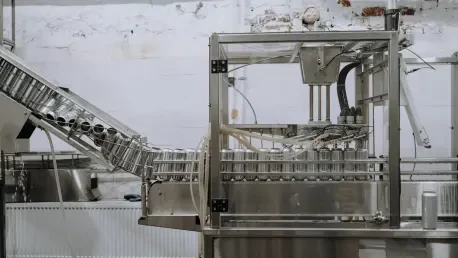In today’s fast-paced business environment, where operational inefficiencies can cripple even the most established organizations, Allegis Global Solutions has emerged as a beacon of innovation by harnessing the power of automation to overhaul its workflows. Through a strategic partnership with UiPath Inc., a frontrunner in automation software, Allegis has not only tackled deep-rooted challenges with legacy systems but also set a new standard for scalability and productivity. Showcased at Fusion, this transformative journey offers a compelling glimpse into how technology can streamline processes while paving the way for broader strategic shifts. It serves as an inspiring case study for companies grappling with outdated infrastructures, demonstrating that the right tools, paired with a forward-thinking mindset, can turn operational hurdles into opportunities for growth. This narrative explores the challenges Allegis overcame, the solutions implemented, and the far-reaching impact of their approach.
Breaking Free from Legacy Constraints
Allegis Global Solutions found itself at a critical juncture when confronted with an antiquated invoicing system that was mired in manual processes and plagued by inconsistency. The variability in workflows created a bottleneck that made scaling operations an uphill battle, with projections indicating that modernizing the system through traditional means would demand over a decade of developer time. Such a timeline was not only impractical but also a stark reminder of how legacy systems can stifle progress in large organizations. This challenge is far from unique, as many companies today wrestle with similar outdated frameworks that drain resources and hinder adaptability in a competitive landscape. Allegis’ situation underscored an urgent need for a transformative approach that could break the cycle of inefficiency and lay the groundwork for sustainable growth, prompting a search for a solution that went beyond temporary fixes.
The decision to pivot away from maintaining the old system marked a turning point for Allegis, as it became clear that continuing with manual overhauls was an unsustainable drain on time and resources. Instead, the focus shifted toward finding a modern alternative that could address the root causes of inefficiency while offering long-term reliability. This realization aligned with a broader industry trend where businesses are increasingly recognizing the limitations of patchwork solutions for legacy issues. Allegis’ experience highlights a critical lesson: clinging to outdated processes can create a ripple effect of delays and costs that undermine strategic goals. By acknowledging the scale of the problem early on, Allegis positioned itself to explore innovative technologies that could deliver not just incremental improvements but a complete reinvention of how key operations were managed.
Unleashing Potential with Advanced Automation
With the weight of an inefficient system holding it back, Allegis turned to UiPath’s cutting-edge automation platform as the cornerstone of its operational overhaul. The integration of sophisticated tools such as Maestro orchestration, Document Understanding, and AI-driven agentic capabilities enabled the creation of a customized ecosystem that directly targeted pain points in invoicing and onboarding processes. This wasn’t merely about automating repetitive tasks; it was about constructing a scalable framework that could adapt to evolving needs while ensuring consistency across complex workflows. The result was a dramatic leap in efficiency, proving that a well-implemented automation strategy can transform even the most cumbersome operations into streamlined, reliable systems that drive business forward.
Beyond the immediate technical benefits, the adoption of UiPath’s solutions showcased how a comprehensive automation suite can serve as a competitive edge in a crowded market. Allegis didn’t just solve isolated problems—it built a foundation that could handle future challenges with agility, a factor that many organizations overlook when embarking on digital transformations. The seamless interplay of various UiPath tools allowed for a level of precision and speed that manual processes could never achieve, particularly in handling variable data sets inherent in onboarding and financial operations. This approach reflects a growing recognition in the business world that automation is most effective when it’s tailored to specific needs rather than applied as a one-size-fits-all fix. Allegis’ success in this arena offers a blueprint for others seeking to modernize without sacrificing flexibility or control.
Redefining Organizational Dynamics
The ripple effects of automation at Allegis extended far beyond the realm of technology, sparking a profound reevaluation of how resources and roles were allocated within the organization. As Paul Kistner, Global Director of Business Transformation, emphasized, the time saved through automation allowed teams to shift focus toward high-value, strategic initiatives rather than being bogged down by routine tasks. This shift triggered important conversations about restructuring departments to better align with long-term goals, illustrating that the benefits of automation are not confined to operational metrics alone. It’s a powerful reminder that technology, when leveraged thoughtfully, can act as a catalyst for reshaping the very fabric of an organization, pushing it toward a more innovative and responsive future.
Complementing this perspective, Julie Woods’ insights on scalability and adaptability further highlighted the necessity of viewing automation as part of a larger strategic vision. The ability to reallocate human capital to tasks that drive growth—rather than merely maintaining the status quo—opened up new possibilities for how Allegis could position itself in the market. This transformation wasn’t just about cutting costs or speeding up processes; it was about creating an environment where employees could contribute to meaningful change. Such a holistic approach sets Allegis apart, showing that the true value of automation lies in its capacity to empower people and redefine workflows in ways that align with broader business objectives. This mindset shift is a critical takeaway for any organization aiming to integrate technology without losing sight of its human element.
Gaining Acclaim for a Visionary Approach
Allegis’ innovative use of automation did not go unrecognized, as it garnered significant praise from industry expert Maureen Fleming of IDC during the evaluation for the AI25 Awards. The intricate nature of their use case, coupled with the adept application of UiPath’s diverse toolset, was celebrated as a prime example of merging technological advancement with measurable business impact. This accolade wasn’t merely a pat on the back—it validated the idea that tackling complex operational challenges with a well-rounded automation strategy can yield results that resonate across industries. Allegis’ recognition serves as a benchmark, illustrating how a commitment to innovation can elevate a company’s standing while providing a model for others to emulate in their own transformation efforts.
This external validation also shed light on the broader implications of Allegis’ journey, emphasizing that success in automation hinges on balancing cutting-edge tools with clear business outcomes. The ability to manage variability in processes like onboarding, while maintaining reliability through advanced solutions, positioned Allegis as a leader in operational excellence. Such achievements underscore a pivotal trend: organizations that prioritize both innovation and practical results are better equipped to navigate the complexities of modern business challenges. For companies looking ahead, Allegis’ story offers a clear lesson—automation, when executed with precision and foresight, can redefine efficiency standards and inspire industry-wide progress. This recognition marked a significant milestone, reflecting the potential for thoughtful technology adoption to drive lasting change.









